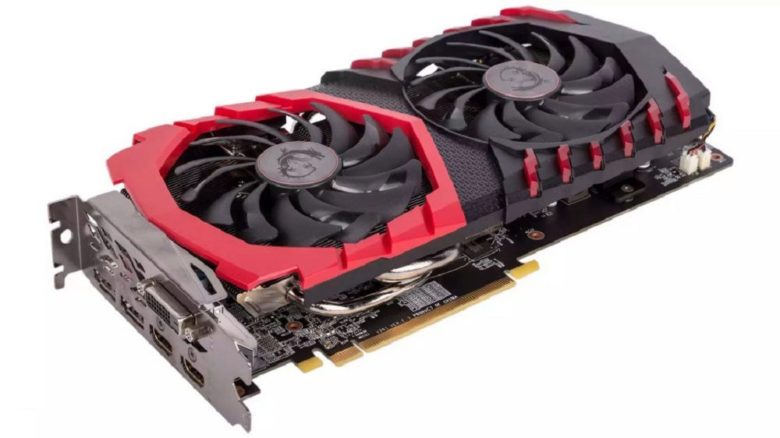If you’ve ever shopped for a new computer or read computer reviews online, you may have heard of a graphics card, display card or video card. All of these terms refer to the same device: a specialized computer within the computer designed to speedily handle processing relating to drawing highly detailed, quickly updated video on your computer’s screen.
How a Display Card Works
A display card is essentially a two-dimensional circuit board that plugins into your computer and handles specialized computations relating to graphics. It contains its own random access memory, or RAM, as well as its own processor chip, called a graphics processing unit, or GPU. Unlike the general purpose central processing unit, or CPU, in your computer, that chip is especially made for quickly doing the kind of math useful for drawing and animation.
That means a lot of quick multiplication and matrix operations that are used to turn three-dimensional models of an image, video or video game into a representation on your computer screen. GPUs run very simple programs called shaders that control the colors, lines and objects drawn on different parts of the screen, and they’re designed to run a lot of these quickly and in parallel with each other, so that controlling one part of the screen’s image doesn’t slow down other portions. Having a GPU separate from the CPU means that much of this image rendering can happen while the computer focuses on other tasks.
Programmers, especially those working on video games, have learned to write code that can quickly generate cutting edge graphics by taking advantage of the properties of various graphics cards from manufactures like Nvidia and AMD. Video gamers in particular often seek the latest video cards to be able to play the newest games with the most detailed graphic settings available.
Other Uses for Graphics Cards
Graphics cards aren’t just used for watching videos and playing games any more.
Nvidia has seen its stock price boom in recent years as programmers have realized an Nvidia graphics card can be used for other purposes. In particular, the hardware is useful for other tasks that require lots of fast, relatively simple mathematical computations, including modern types of artificial intelligence used for tasks like facial recognition and language processing.
GPUs have also been used for cryptocurrency mining, the often lucrative practice that maintains the networks of digital currencies such as bitcoin and its rivals. Like AI and graphics, mining many currencies relies on speedily performing many simple mathematical operations in a way that is well-suited to graphics cards.



